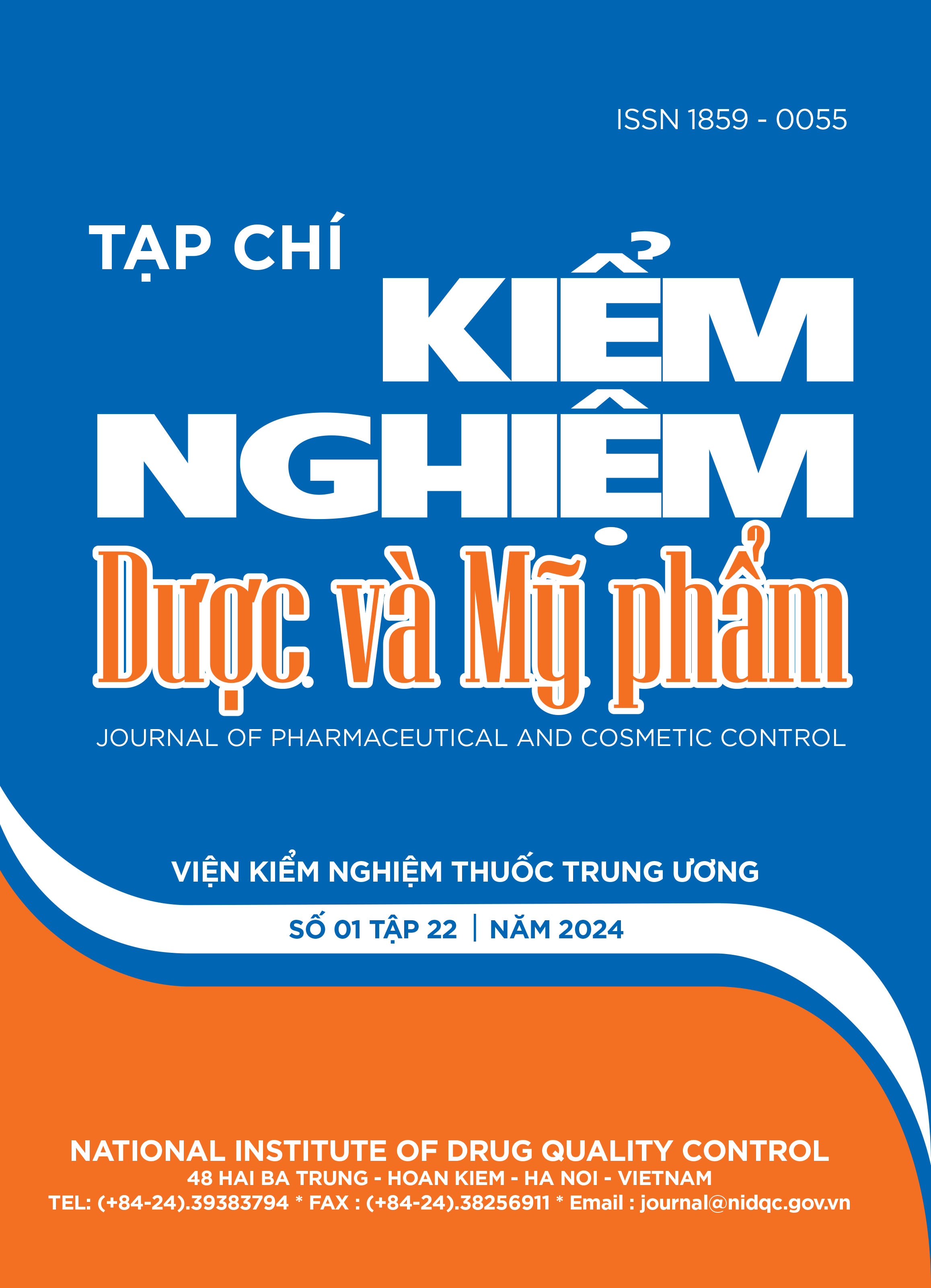Development and validation of a LC-MS/MS method for quantification of bilastine in human plasma
Main Article Content
Abstract
A simple, specifc and sensitive LC-MS/MS method has been developed for determination of bilastine in human plasma. The analyte and the internal standard (carbamazepine) were extracted from human plasma by the protein precipitation method with acetonitrile. Chromatographic analysis was developed on a C18 column (dimention 50 x 2.1 mm, particle 1.7 µm) with isocratic elution at a fow rate of 0.2 ml/min using a mobile phase of water (10 mM ammonium formate + 0.1 % formic acid) and acetonitrile (10 mM ammonium formate + 0.1 % formic acid) with suitable ratio. The Waters Xevo TQ-XS UPLC-MS/MS was operated under the multi reaction-monitoring mode using the positive ion mode, with transitions at (m/z) 463.80 →271.72 for (BIL), 236.70 → 164.70 for (IS). The method was validated over concentration range from 3 ng/ml to 600 ng/ml. The intra and inter-day precision and accuracy were within between 91.5 % and 105.7 %. This method can be used for BA-BE studies of bilastine preparations.
Article Details
Keywords
bilastin, bioequivalence, huma plasma, LC-MS/MS
References
2. B. Sádaba, J.R. Azanza, A. García-Bea, L. Labeaga, C. Campo, R. Valiente (2019), Bioequivalence Evaluation of Three Pediatric Oral Formulations of Bilastine in Healthy Subjects: Results from a Randomized, Open Label, Crossover Study, European Journal of Drug Metabolism and Pharmacokinetics, https://doi.org/10.1007/s13318-019-00596-2.
3. T. Michinori, Y. Hidetoshi, R. Mónica, et al. (2016), Pharmacokinetics, pharmacodynamics and population pharmacokinetic/ pharmacodynamic modelling of bilastine, a second-generation antihistamine, in healthy Japanese subjects, Clinical Drug Investigation, 36, pp. 1011-1021.
4. J. Gieroń (2019), Determination of bilastine in biological material -analysis of a fatal case, Problems of Forensic Sciences, 119, pp. 225–239.
5. U.S. Department of Health and Human Services Food and Drug Administration (2018), Guidance for Industry - Bioanalytical Method Validation.


